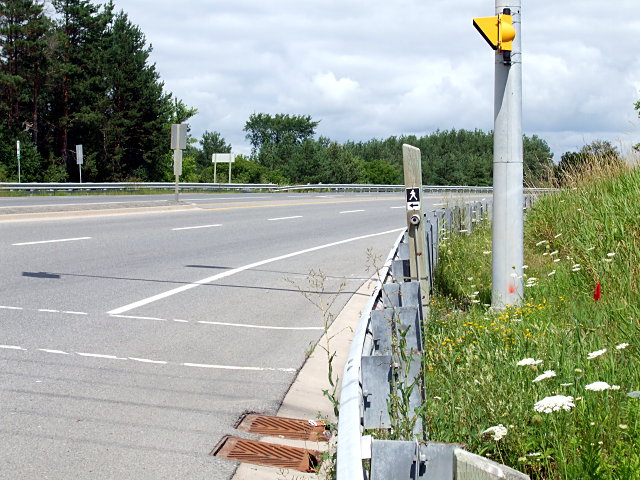Rainforest
Senior Member
U2 - great analysis!
Back to TC2 / TC3 fantasies ...
...
In many cases, routes well suited for LRT ridership-wise do not have room for ROW, whereas wide streets do not have density that warrants LRT. Two cases at hand are Dufferin and Bathurst.
The "southern" Dufferin (from Wilson to King) would be a great LRT route, but the street is not wide enough to accomodate two dedicated transit lanes. Tunneling would, obviously, cost a fortune.
In contrast, the "northern" Dufferin (Allen Rd from Sheppard to Finch, plus Dufferin north of Finch) is very wide (except under the CN bridge north of Steeles). But, there is not much density around it. Unless major developments happen there, dedicated BRT or HOV lanes are probably sufficient. The Sheppard - Finch section will have BRT lanes installed as a part of York U busway, whereas York Region is currently building HOV lanes north of Steeles. So, BRT lanes from Finch to Steeles is all that needed.
Likewise, a Bathurst LRT all the way from the south to Steeles (or even Promenade) would be very successful. The 7 Bathurst bus is well-used any time of the day, and this is an indication of a strong local ridership. However, the street is too narrow south of Wilson, and even a few hundred meters north of it.
An LRT line that services only a portion of Bathurst may be considered: most likely, that would be Wilson to Promenade and operating off the Wilson subway station. However, the effect of splitting the route should be studied before committing the funds, as well as the effect of Yonge subway extension. The latter will bring the subway closer to both the Bathurst / Steeles high-density cluster and to the Promenade centre, and hence divert some riders.
Back to TC2 / TC3 fantasies
In many cases, routes well suited for LRT ridership-wise do not have room for ROW, whereas wide streets do not have density that warrants LRT. Two cases at hand are Dufferin and Bathurst.
The "southern" Dufferin (from Wilson to King) would be a great LRT route, but the street is not wide enough to accomodate two dedicated transit lanes. Tunneling would, obviously, cost a fortune.
In contrast, the "northern" Dufferin (Allen Rd from Sheppard to Finch, plus Dufferin north of Finch) is very wide (except under the CN bridge north of Steeles). But, there is not much density around it. Unless major developments happen there, dedicated BRT or HOV lanes are probably sufficient. The Sheppard - Finch section will have BRT lanes installed as a part of York U busway, whereas York Region is currently building HOV lanes north of Steeles. So, BRT lanes from Finch to Steeles is all that needed.
Likewise, a Bathurst LRT all the way from the south to Steeles (or even Promenade) would be very successful. The 7 Bathurst bus is well-used any time of the day, and this is an indication of a strong local ridership. However, the street is too narrow south of Wilson, and even a few hundred meters north of it.
An LRT line that services only a portion of Bathurst may be considered: most likely, that would be Wilson to Promenade and operating off the Wilson subway station. However, the effect of splitting the route should be studied before committing the funds, as well as the effect of Yonge subway extension. The latter will bring the subway closer to both the Bathurst / Steeles high-density cluster and to the Promenade centre, and hence divert some riders.






